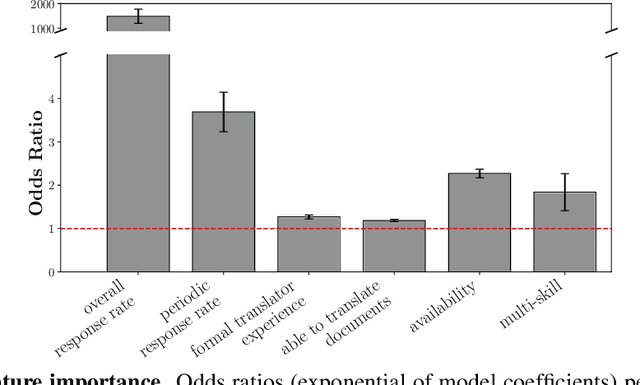Thomas Vetterli
Improving Precancerous Case Characterization via Transformer-based Ensemble Learning
Dec 10, 2022



Abstract:The application of natural language processing (NLP) to cancer pathology reports has been focused on detecting cancer cases, largely ignoring precancerous cases. Improving the characterization of precancerous adenomas assists in developing diagnostic tests for early cancer detection and prevention, especially for colorectal cancer (CRC). Here we developed transformer-based deep neural network NLP models to perform the CRC phenotyping, with the goal of extracting precancerous lesion attributes and distinguishing cancer and precancerous cases. We achieved 0.914 macro-F1 scores for classifying patients into negative, non-advanced adenoma, advanced adenoma and CRC. We further improved the performance to 0.923 using an ensemble of classifiers for cancer status classification and lesion size named entity recognition (NER). Our results demonstrated the potential of using NLP to leverage real-world health record data to facilitate the development of diagnostic tests for early cancer prevention.
Accurate and Scalable Matching of Translators to Displaced Persons for Overcoming Language Barriers
Nov 30, 2020


Abstract:Residents of developing countries are disproportionately susceptible to displacement as a result of humanitarian crises. During such crises, language barriers impede aid workers in providing services to those displaced. To build resilience, such services must be flexible and robust to a host of possible languages. \textit{Tarjimly} aims to overcome the barriers by providing a platform capable of matching bilingual volunteers to displaced persons or aid workers in need of translating. However, Tarjimly's large pool of translators comes with the challenge of selecting the right translator per request. In this paper, we describe a machine learning system that matches translator requests to volunteers at scale. We demonstrate that a simple logistic regression, operating on easily computable features, can accurately predict and rank translator response. In deployment, this lightweight system matches 82\% of requests with a median response time of 59 seconds, allowing aid workers to accelerate their services supporting displaced persons.
 Add to Chrome
Add to Chrome Add to Firefox
Add to Firefox Add to Edge
Add to Edge